To Eat is The Privilege of The Living
2024 Artist Residency — Part 2
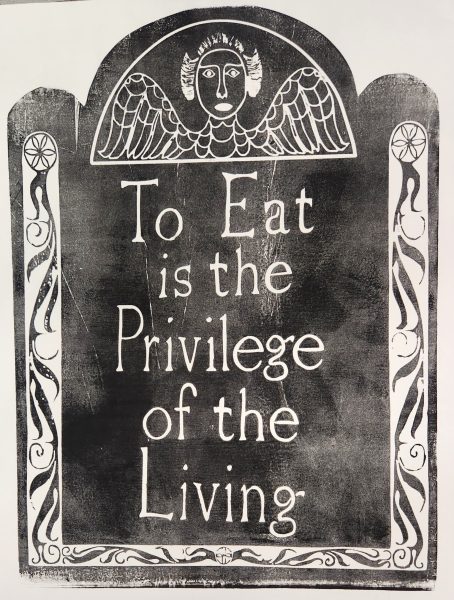
I made a peg board to hang pots in in the kitchen: the historical marker of an individual and personal loss comes to represent the frivolous and manic abundance of consumer culture, the entropy of translation, the beauty and brutality of biology, and the horror of state violence.
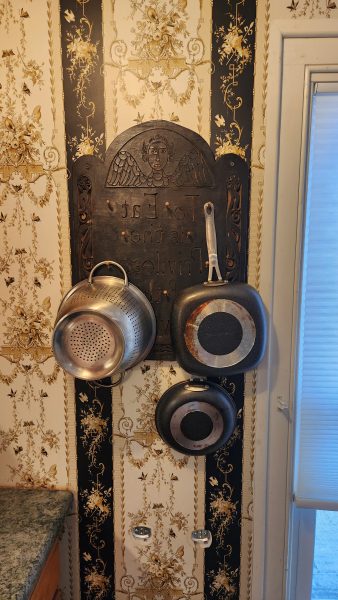
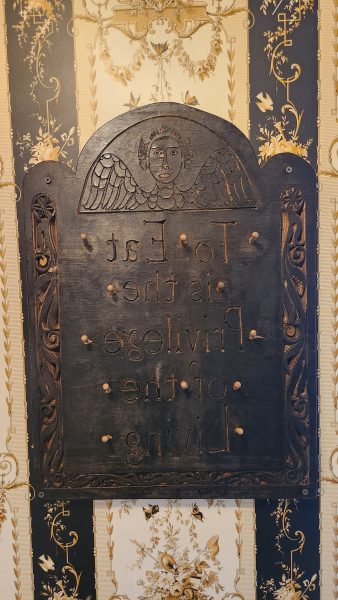
The initial inspiration for this project was as prosaic as the lack of storage space in the shared kitchen of the building where I lived during the artist residency. I take a lot of pride in and comfort from cooking for myself, and was both grateful for and disconcerted by the good free meals provided by the school (a feeling I strongly associate with privilege, the sensation of ease accompanied by a certain loss of independence or identity).
I was impressed by the woodshop at the school and had the idea to make a peg board to hang pans and cooking utensils on, and thought it would be funny to replicate a headstone from the cemetery across the street, as a sort of artisanal, hyper-local version of the explosion of elaborate and inventive disposable Halloween home decor that suffuses major retailers in the fall. Another way that we define ourselves in contemporary society is as “consumers,” the literal interpretation of this image occurs to me frequently as a population of gaping maws, gulping down electronics, furniture and seasonal knickknacks which lose utility and value almost at the moment they enter our possession, because their only purpose was to be purchased.
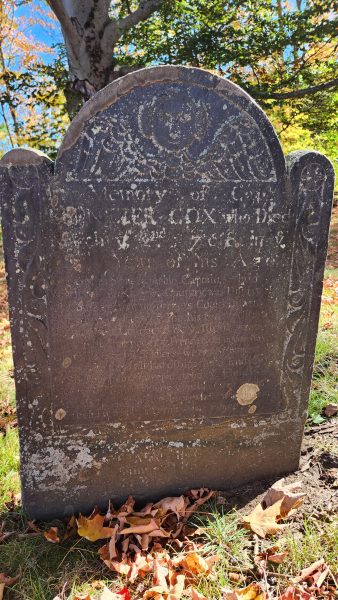
Some rather lovely lichens are nibbling at the source of my image, a headstone in Hardwick cemetery which commemorates Ebenezer Cox, a pre-revolutionary military leader, and features a long poem in verse about his successful campaigns against the French. It is also signed by the maker, Samuel Fisher, presumably in token of the prodigious workmanship displayed in cutting all those letters. My inexpert grave rubbing technique could not capture the text, so I settled for reusing the frame elements and copying the lettering style for my own message. This peg board would necessarily be left behind, so I decided to engrave it in reverse and use the cut surface for a series of woodblock prints I could take with me. I also made black walnut ink from walnuts I found growing in the cemetery and used it in some of the prints, and to stain the wood for the final installation. The process of taking a rubbing from the stone, redrawing the letters, photographing it, cleaning up the photo into a vector image that could be sent to the CNC, cutting the image into the board with the machine, inking and printing the image with improvised ink, and finally refinishing the board itself into a kitchen storage system; all these processes involved layers of loss of information and detail, distortion and reinterpretation of the original historical object.
The quote “To Eat Is The Privilege of The Living” is paraphrased from an anime cartoon called Dungeon Meshi, in which a band of adventurers in a magical dungeon encounter and eat a variety of life forms. The phrase stuck with me; first, in the sense of “reserve,” as a succinct and precise definition of the boundaries of “life,” something I have become increasingly interested in through learning about fungi and mycology, a field which recognizes, in peculiar bits of matter, life forms whose common ancestor with humanity is not so distant as one would suppose. Fungi in particular don’t seem to do much besides eat, and yet they are complex actors in their own biomes, and make many other manifestations of life possible.
A second aspect of “privilege” (as contrasted with a “right”) is a benefit of a certain status, either earned or unearned; in the case of eating, all life forms “enjoy” the privilege of needing to eat to live, but, without food sovereignty, that privilege can be revoked, as in the current mass starvation of the civilian population of Palestine by the Israeli state.
When the privilege of eating is removed, the subjects of that deprivation (same latin root, privare — meaning to withdraw or bereave) are effectively unenrolled from the ranks of the living; they have been decertified as vital entities, no longer officially entitled to the same biological processes practiced by lichens, yeasts or molds.
Living in a community centered around a luxury-hotel-style free salad bar where no one openly acknowledged any political realities proved itself to be only a mild exaggeration of the larger condition of society. This piece became a way for me to nail up what I know where it wouldn’t be censored but couldn’t be avoided, in hopes that those who come after will see that hope and rage and feeding each other have a place here. We are presented with fresh avocado, mango, cheese tortellini, red onion, red cabbage, arugula, bacon bits, blue cheese and local honey mustard vinagrette, and we’re hanging our hopes for justice and the future on the structures we build with the tools at our disposal.
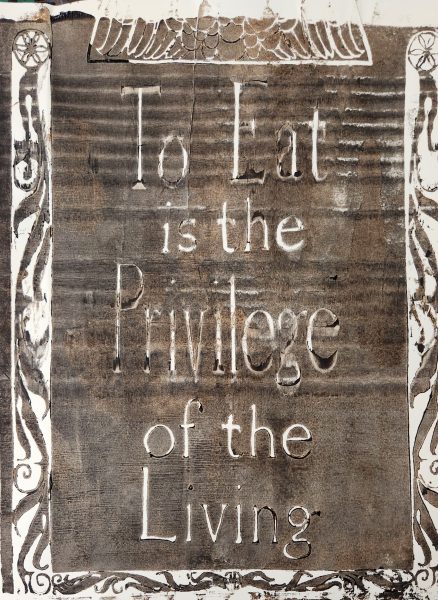
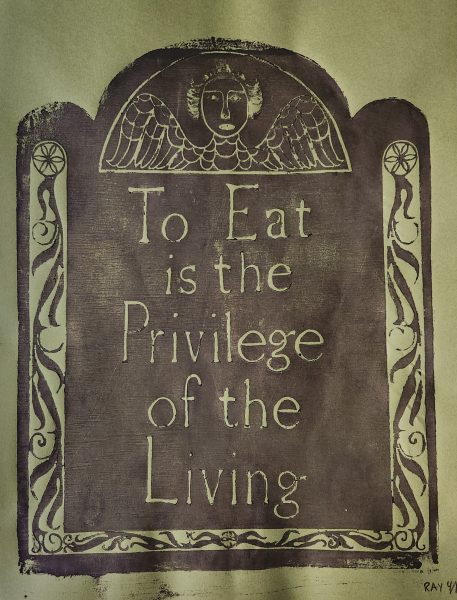
Folks have expressed interest in owning these, so I’m raffling off the full run of 13 prints that I made at an artist residency last year as a benefit for people who are starving in Gaza. The prints vary a good deal, some are on green paper, some use a homemade black walnut ink, and some are misprinted in interesting ways; they’re 19″ x 24″ and all of them are included in this. To enter, please give any amount that feels meaningful to you to one of the randomly chosen vetted survivors at gazafunds.com or The Sameer Project and send me a screenshot or receipt by August 15th, 2025.
Thank you so much,
Eleanor
